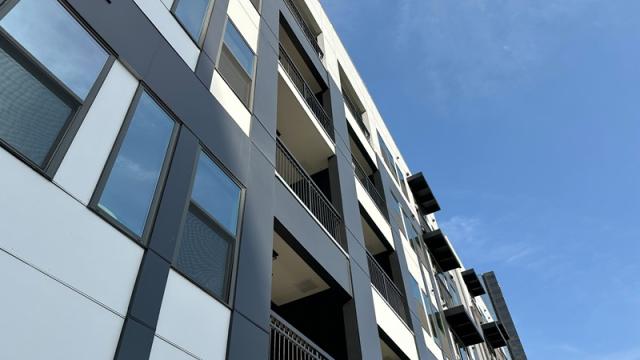webinar

Apartments.com

Multifamily Market Begins Turning Corner in Q3
After over two years of weak demand and growing supply, the multifamily market is showing positive signs of a potential recovery, according to the latest webinar from Apartments.com. Jay Lybik, CoStar’s national director of multifamily analytics, offered the highlights from the third quarter data, including some bright spots in another otherwise challenging market for apartment owners and operators.
Supply-demand gap begins to shrink
With 176,000 units absorbed, the third quarter saw the highest demand since 2021. This comes at the same time as a new record in projected deliveries. With 636,000 units projected to deliver this year, 2024 is on track to set a new 40-year record.
Despite the high supply, the third quarter saw the supply-demand gap begin to shrink. And deliveries next year are expected to fall by almost 50 percent, which Lybik described as “a huge positive sign for the multifamily market.”
Luxury demand rises but still overwhelmed by supply
About three-quarters of units under construction are considered four- or five-star properties in the CoStar building classification system. These properties, also known as the luxury class, have seen the lowest rent growth of all price points. In the third quarter, rent growth for four- and five-star apartments rose into positive territory at 0.3 percent.
In contrast, mid-priced apartments — also known as three-star properties — outperformed the national average. Thanks to a greater balance between supply and demand, this price point posted year-over-year rent growth of 1.5 percent.
Sun Belt continues to struggle, while Midwest and Northeast see solid gains
The high concentration of supply in the Sun Belt has continued to push down asking rents. Rent growth for the third quarter remained negative for the region, and Austin ranked yet again as the bottom-performing market, with rent growth of -4.7 percent and the highest vacancy in the nation. Raleigh, Jacksonville, Phoenix, and Atlanta rounded out the bottom five for rent growth.
At the same time, the Midwest and Northeast outperformed national rent growth. At 3.5 percent, Washington, D.C. took the top spot for the highest year-over-year rent growth, closely followed by Detroit and Richmond at 3.4 percent.
Multifamily market tentatively on track for gradual recovery
With demand on the rise and new deliveries expected to slow, the outlook for multifamily appears positive, Lybik said.
However, he warned of a major downside risk posed by the conflict in the Middle East. A potential economic supply shock could drive up oil prices and take a toll on renter demand.
“Hopefully, the U.S. economy will continue expanding throughout 2025 and keep the multifamily recovery on track,” Lybik said.







